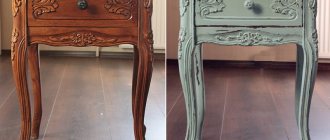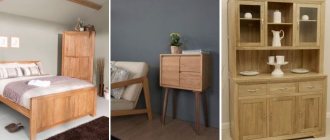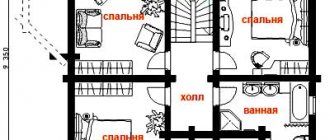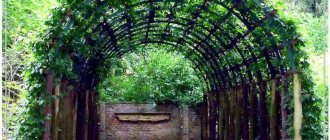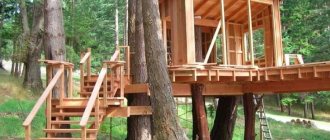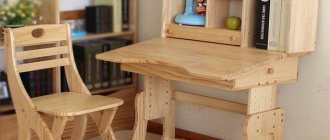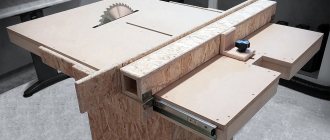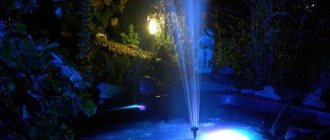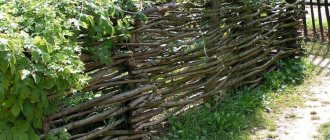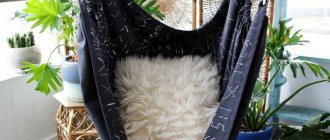Popular sports competitions in table tennis are better suited for indoor environments: educational institutions, sanatoriums, offices. Streets where a standard tennis table is used quickly ruins it. High humidity and temperature changes negatively affect the product. Tennis tables are moisture resistant - they are made of plywood, which is attached using formaldehyde glue. Their tabletops are made of plastic with an aluminum layer. These products are designed to withstand bad weather. Another type is anti-vandal, it is monolithic and does not fold. Its tabletop is made of steel or aluminum.
A little history
The name "Ping Pong" appeared at the end of the 19th century. A number of historians believe that the game owes its appearance to the rainy weather of Foggy Albion, which forced tennis matches to be interrupted.
To be absolutely precise, table tennis and ping-pong are two different sports, but in everyday speech they are very often used as synonyms.
The whole difference between Olympic and amateur sports lies in the “clothing” for the rackets. Table tennis uses rubber-coated rackets, while ping-pong uses either uncoated or cork-and-parchment-coated rackets.
The first set for the game was released by Jaques of London in 1891. Well, many modern home craftsmen know how to make a tennis table without resorting to the services of branded salons and stores and willingly share their knowledge on their own websites.
Top 4 tables for home use
GIANT DRAGON Power 800
A good amateur model, which is intended for use in enclosed spaces. The table can be used both at home and at school, clubs, etc. places. For greater comfort, the tabletop is made of MDF, which is equipped with a high-quality anti-reflective coating. The thickness of the tabletop reaches 18 mm, which provides users with comfortable gaming.
Also, an additional advantage is the presence of a metal edge, which will provide the tennis table with the necessary rigidity. For safe transportation and movement there is a convenient Twin Multi-Security folding system. The mesh is attached to the table; dismantling/installation is not required, which will significantly increase the durability of the device. The dimensions of the structure fully comply with international standards, which makes it possible to hold small school competitions.
The average cost is 21,000 rubles.
GIANT DRAGON Power 800
Advantages:
- Low price;
- Reliability;
- Build quality;
- Acceptable thickness;
- Rigidity;
- Folding safety.
Flaws:
- Not detected.
DONIC INDOOR ROLLER FUN GREEN
A high-quality German table at an affordable price, which is intended for private use. Thanks to the convenient folding and unfolding system, a person can safely move the device. When folded, the design does not take up much space, which allows it to be stored with maximum convenience.
To ensure maximum stability, the manufacturer has equipped the device with good rigidity. There are 4 wheels that ensure high-speed movement of the structure from one place to another so that the table does not move during the game, there are special stoppers. The mesh is installed immediately and does not require dismantling.
The average cost is 22,000 rubles.
DONIC INDOOR ROLLER FUN GREEN
Advantages:
- Convenient racket and sword holder:
- Reliable design;
- High-quality assembly;
- Doesn't take up much space;
- Equipment.
Flaws:
- Not found.
Scholle T500
A good design that will suit most ping pong players. All sizes are made in accordance with international requirements, which will ensure comfortable playing. The main material is 12 mm MDF, which is equipped with an anti-reflective coating. The table has good moisture resistance and is also durable.
The big advantage is the safety of the material, which is important for indoor use. The design is completely foldable, making it easy to transport and store equipment. There is a possibility of a single game mode. The set includes 2 rackets, 4 swords and a net.
The average cost is 17,500 rubles.
Scholle T500
Advantages:
- Reliability;
- Quality manufacturer;
- Low cost;
- Equipment;
- Possibility of solo play;
- Good gaming characteristics.
Flaws:
- Not detected.
START LINE TRAINING
A high-quality model, made in accordance with all international standards, will provide the player with a high-quality game. Made from popular material: chipboard with a thickness of 22 mm, which provides excellent rebound. There is also a metal edging.
Thanks to the comfortable legs, a person is able to independently adjust their height, which makes it possible to play on uneven surfaces. The weight is 96 kg, so moving the table will not be an easy task.
The average price is 20,000 rubles.
START LINE TRAINING
Advantages:
- Reliability;
- High-quality assembly;
- Price;
- Good bounce;
- Folding.
Flaws:
- High mass.
For indoor play
According to the table manufacturing diagram, you will need:
- legs (8 pcs.);
- crossbars (4 pcs.);
- lateral ligaments and spacers (2 pcs.);
- clamps (8 pcs.);
- countertops (2 pcs.);
- hinge plate, brackets, axle (8 pcs. each) and lugs (16 pcs.).
On the World Wide Web it is not difficult to find photographs of a tennis table with a step-by-step explanation of how to assemble such a product.
Second option
Knowing the standard dimensions of a tennis table (2.74 by 1.52 and height 76 cm), you can make sports equipment in the simplest way.
Sheets of plywood and legs are purchased. Everything is held together with self-tapping screws, the product is painted, and in just a couple of hours the table is ready!
Note!
- DIY induction heater ♨️ - reviews of the best manufacturing options. Varieties of homemade device designs + step-by-step master class (160 photos)
Do-it-yourself Gauss cannon: TOP-130 photos of the best ways to create it yourself. Design features + master class for beginners
DIY clamps - a step-by-step master class for beginners. Schemes for manufacturing different designs + 170 photos
Kitchen table: dimensions and standard
Before choosing a kitchen table, pay attention to the style of your room, what size it is, how much financial resources you have for the purchase, and how many people are in the family. Choose a model with standard sizes. Ease of use and operation is the most important thing.
In order to calculate the dimensions, use a certain rule. The width and depth should be calculated taking into account the use of the surface - 60-40 cm. The middle part of the table should have a free area of at least 20 cm - it is needed for serving. And therefore the minimum width is 80-85 cm. The length depends on the number of people and the size of your kitchen. Therefore, the length is selected individually. Rectangle is the standard shape. It can seat four people behind it. There are folding and sliding models. Their surface length and width may vary. The height of the transformer also changes. Sliding tables thus turn from a standard one into a large dining table, with a length of up to 3 meters.
What sizes are there:
- For 4-6 people – 150-90 cm;
- For 8 people – 110-200 cm;
- Up to 12 people – 110-320 cm.
The most convenient option for everyday use is rectangular. Your chairs should also move away without any problems. Consider the size of the kitchen and how your door is positioned.
Outdoor table
Making a folding table is more difficult, but such equipment is much more practical. The difficulty lies in the large number of connections and parts that must be carefully adjusted to each other.
You shouldn’t get hung up on exact measurements – a couple of millimeters or even centimeters are not decisive. The most important condition for a normal product suitable for playing is a flat and smooth table surface.
Particular attention should be paid to the material - if the product will be constantly outdoors, materials such as fiberboard or chipboard cannot be used. Even covered with several layers of paint, playgrounds made from these materials will very quickly lose their shape and bend.
Necessary materials
In order for the table to “tolerate” any weather conditions (heat, direct sunlight, cold, rain, snow), it must be made of either plastic or laminated, water-repellent birch plywood.
This is the material that is best used when making a do-it-yourself tennis table for the outdoors. The thickness of the material used should be in the range of 16-20 mm.
The traditional color for gaming tables is green. If you purchased plywood of a different shade, you should paint the playground in the desired color, this will only enhance the “capabilities” of the playing surface to withstand precipitation.
Note!
Do-it-yourself electric scooter - a master class with step-by-step instructions for doing it yourself. Tips and simple patterns for beginners + the best photo reviews
DIY rocking chair: TOP-120 photos of the best manufacturing options. Master class on creating a rocking chair at home
Smokehouse from a gas cylinder - the best master class on making a homemade smokehouse with step-by-step photo diagrams for beginners
Since transporting a standard sheet of laminated plywood is extremely difficult, you can purchase a couple of sheets of a smaller size, and on the spot, during work, fasten them together using a beam of a suitable size.
Important! Complete moisture resistance will be provided by edging the edges of the table top with an aluminum profile.
What you need to prepare
1 2
3 4
First of all, you need to think about the platform on which the table will be installed. If the table is to be placed indoors, then a standard-sized table requires an area of six by twelve meters. Mini tables can easily fit inside a more or less spacious room. But if the table is on the street, then get ready to level the area for it.
It is better to make the table matte, otherwise glare may interfere with the game
Ideally, you need to build a flat area with concrete pouring, or use a special covering (playing on the ground or sand is not always convenient, especially after rain).
After this, we need to determine the size of the table - standard, midi or mini (or we need to assemble a table for children). Also decide whether we are assembling a table with a folding mechanism or not. If the table is completely stationary, then you can do without using wheels, although it is still better to make the structure more mobile.
Materials required for a tennis table (different options are possible):
- plywood (for the countertop it is better to use moisture-resistant plywood, at least twelve to fifteen mm thick);
- chipboard or chipboard (but remember that chipboard is less moisture resistant);
- board one hundred by twenty-five mm (you can make a base or stiffeners from it);
- fifty-fifty timber for making legs (you can purchase beams of the required length so as not to cut them yourself);
- metal corners, fastenings for legs, self-tapping screws;
- matte paint of dark blue (or dark green) (it is better to choose matte paint, because it does not glare in the sun).
What tools are best to use? The most suitable option is a jigsaw and a screwdriver. For painting you will also need a fine-nap nylon roller.
Legs
The table must be strong and stable, because... During game battles, opponents may accidentally lean on or push him. It is better to make the supporting base of the platform from a metal frame. For this you will need:
- four pipes measuring one and a half meters;
- squares - four one meter long and the same number two meters long;
- eight half-meter squares.
What about the little ones?
Children's tennis table
As for the cost of ready-made tennis tables, a story similar to folding ones is repeated with children's tables of reduced size. Branded children's tennis tables look elegant, no doubt about it, see fig. on right. But their prices, as they say, don’t even smell close to liberal-democratic values. But of course, all the best goes to children! And for the best there should be nothing to be sorry for. Principles are principles, and marketing is marketing.
Well, here too you can get out of the situation by making a children’s tennis table with your own hands, see fig. The design is simple, you don’t even need a commercial mesh. You can place this sports equipment on a regular table, on stools, a children's table, and in general on any stand. Or just on the floor. There are such fruits of the joint efforts of parents that he himself is little more than a racket, and already, puffing, he throws.
Drawings of a children's tennis table
About metal in a tennis table
Hobbyists who prefer plumbing rather than carpentry often make their own tennis tables from simple lengths of wooden beams connected by shaped steel fasteners, like those in Fig. Even a seasoned professional will not feel the difference in the oblique rebound from the same tabletop on such a table compared to a purely wooden one.
The design of the base of a tennis table on steel connectors
However, oddly enough at first glance, a wooden-steel table turns out to be less durable than a completely wooden one. Nobody plays while yawning and scratching themselves. And if you throw yourself into the table in excitement, the sharp edges of the connectors little by little cut the wood over and over again, and the table becomes loose. Round through steel fasteners do not give this effect, because... in a table of correct design, concentrated loads do not fall on the sharp edge of the metal or there is none at all.
"Oak" tables
It is also undesirable to make the base of the tennis table overly strong and massive, as in Fig. This is where the risk of injury comes into play. It’s better that the table moves from a player’s accidental “impact” and you have to correct it (which is also provided for by the rules of professional competitions), than to run into your belly on the edge of the tabletop, or worse, that below your stomach on its corner, and end up in the care of a traumatologist.
Overly strong and massive tennis tables
Frame assembly
Let's look at the instructions on how to make a frame for a tennis table at home.
Step No. 1. Using two-meter squares, we connect a couple of pipe sections and weld them together. The first crossbar is located twenty centimeters from the top edge, the second seventy centimeters lower.
Note!
- Do-it-yourself compressor: TOP-130 photo reviews of finished compressors. Step-by-step instructions + diagrams and drawings
Do-it-yourself wind generator: TOP-170 photo reviews of finished devices. Detailed DIY instructions for beginners
Do-it-yourself spot welding - the best master class on making homemade spot welding with step-by-step photo diagrams of do-it-yourself work
Step No. 2. Align the assembled frame and weld it.
Step No. 3. A similar operation is carried out to design the second pair of table legs.
Step No. 4. In the place where the table is installed, holes more than half a meter deep are dug, sand is poured in and the legs of the tennis table are dug in.
Step No. 5. The table legs are fixed in the ground with cross-shaped mortgages. Using a spirit level, it is necessary to achieve the most uniform height of the table legs.
Step No. 6. The holes are filled with bitumen or cement.
Tabletop
As you know, a ping pong ball freely falling from a height of 1 foot, which is equal to 12 inches or 305 mm, should bounce straight up at least 10 inches or 254 mm from the top of a proper table tennis table. However, an oblique rebound is also of great importance in the game, especially if the throw is cut, i.e. The ball rotates quite quickly.
Ideally, a ball with an oblique rebound should fly off as a physical point from an absolutely hard and elastic surface. What spoils the throw is the influence of the already mentioned sliding, sticking, rolling and rolling of the ball in the interaction of these factors. We won’t go into theory, it’s complicated. Coriolis at one time developed a theory of playing billiards, which is not in last place in mechanics. Manufacturers of billiard tables, cues, and balls know it and use it, but billiard players, who will cut any theorist on the table like a nut, begin to shake in the name of Coriolis. So let's move straight to practice: what material would be better for the top of a tennis table?
Boards
Made of boards in a noble way, like the top of a dining table - definitely not. Unless the wood used is expensive, selected fine-grained wood: bog oak, ash, walnut. Since half a century ago, tournament tennis table tops have been made of teak or ebony. The tabletop of a ping-pong table, made of ordinary pine boards according to all the rules of furniture art, will soon go in waves imperceptible to the eye. You can somehow throw at such a ball, but if you cut it a little, the opponent just grins.
Plain plywood
Table tennis table design with plywood top
Amateurs most often make tabletops for tennis tables from plywood, especially since a couple of standard 1525x1525 sheets are more than enough for the top of a folding table, see below. The smallest commercially available sheets, 1475x1475 mm, are also suitable for an amateur table.
The oblique rebound from the plywood is correct, but sluggish, i.e. the ball sticks a little before flying away and loses some of its energy. You won’t be able to get completely excited on a plywood table. This drawback can be mitigated by painting with water-based acrylic paint in 2-3 layers, which will also increase the moisture resistance of the plywood. For the same purpose, before painting, it is advisable to impregnate the sheets on both sides with a water-polymer emulsion.
Another problem with plywood tennis tables is sagging and warping of the tabletop as a whole. Here the only way out is a non-separable table on a rigid box-shaped base with struts of a design similar to the one in Fig. on right. Some of its advantage is that the entire support can be made of 100x30 and 150x40 boards. Tabletop thickness from 16 mm. It is attached to the supporting frame along the contour with self-tapping screws 60x4.2 in increments of 100-150 mm; the fastener heads are puttied. For an amateur table this is acceptable, because... Only very experienced players can serve on a rebound from the edge of the field.
Chipboard, DSP, etc.
Another option for a table top for a tennis table is laminated chipboard (LDSP) or cement-bonded particle board. Laminated chipboard should be matte; The glossy ball slides and goes to the side so that it is noticeable even to a beginner. DSP is heavy, but good for its moisture resistance; a tennis table with a tabletop made of DSP, painted with acrylic, can survive more than one winter outdoors.
The advantages of chipboard and DSP for the tabletop of a tennis table are also that they are produced in sheets (slabs) of sizes 2750x1500, 2750x1750 and 2750x1830 mm. This allows you to make the tabletop of a courtyard or outdoor stationary table one piece, which, of course, increases its durability and anti-vandal qualities. In the latter respect, the good thing about chipboard and fiberboard is that they are non-flammable and repairable (potholes can be filled with putty). Laminated chipboard is available painted in different colors, but DSP will have to be painted. The thickness of the table top in both cases is 16 mm.
The bad thing about both materials is that the oblique torsional rebound from them is anything but the same as the hand gave. But for amateur outdoor play this does not matter, because... in the open air and the “cool” pros are just throwing around; The very subtleties of the throw are affected by both the air temperature and the uneven heating of the table, racket, and ball by the Sun. And the lightest breeze, of course.
As for flat slate sheets, the ball sticking to it and its scrolling is even greater. And the material itself is heavy and fragile; a crazy hooligan can split the tabletop with a bottle he just drank. True, flat slate is cheap, but this is its only advantage.
Drawing game lines
In order for the table to be ready for play, markings must be applied to it. A white line 3-5 mm wide is drawn in the middle of the table. Before applying paint, you should use masking tape to mark the boundaries of the center line, this way you can clearly draw the boundary without getting dirty.
Stepping back from the edges along the entire perimeter of the site by 15-20 mm and also marking the boundaries with tape, we apply white paint to indicate the playing area of the table.
Assembly
The last stage of work on making the table will be attaching the playground to the metal base. This can be done in two ways.
First option. Three or four holes are drilled in each table leg plate and the tabletop is secured with screws.
Second way. Through holes are drilled in the table legs, as close to the surface as possible. The playground can be fixed motionlessly either with pieces of reinforcement or with massive wooden splinters inserted into the holes. This option allows you to remove the platform and store it in a dry room during the winter.
What can it be made from?
The materials that can be used to create a tennis table can be very diverse. For example, plywood, chipboard, laminated chipboard and fiberboard, OSB, ordinary wooden boards, metal pipes, slate (flat) and even concrete. All this depends only on your goal and on the conditions in which your tennis table will be placed: indoors or outdoors.
A tennis table, if you plan to install it outdoors, must be very stable. In this case, it is better to replace wooden legs with metal ones (using, for example, profile pipes). And in order for such legs to hold up perfectly, the support structure also needs to be made of metal. The basis of such a table - a metal frame - must be made conscientiously.
And for your table to be all-weather, it is best to build it as a folding one. This is done so that it is not very bulky and can be comfortably hidden in case of bad weather. Unfortunately, some materials may be susceptible to rotting. To prevent this from happening, you need the right material, which must withstand temperature changes, as well as high humidity.
The disadvantages of this material are that during the game the ball begins to stick to the surface a little before bouncing off the table, losing some of its energy. However, this can be easily fixed by painting the countertop with water-based paint (acrylic). This needs to be done in 2-3 layers, which will simultaneously increase the degree of plywood’s resistance to water. Another problem with plywood is that the countertop can begin to sag over time.
Let's consider the advantages of laminated chipboard and DSP.
- The materials are produced in slabs, which makes it possible to create a solid tabletop, and this, without a doubt, increases its fundamentality.
- They are non-flammable and can be easily repaired. Regular potholes can be filled without much difficulty.
- Laminated chipboard is produced and produced already painted in various colors, which will allow everyone to choose an option to suit their taste. At the same time, the DSP will have to be painted, because it comes off the assembly line unpainted, unlike laminated chipboard.
It has many advantages over other materials described earlier.
- First of all, this material is made on the basis of waterproof birch plywood, which is also non-flammable and will not crumble.
- It has a standard sheet size, like laminated chipboard. You can design a tabletop - either a solid one or one that can be disassembled.
- It comes in all the colors of the rainbow, has shades to choose from, and acrylic paint on melamine adheres tightly, so the edging and demarcation line will not be erased for quite a long time.
Using scraps
When making a folding tennis table with your own hands, a certain amount of scraps remains. From these, as a bonus, you can make several rackets for the game. Markings are applied to a piece of plywood:
- draw a rectangle with dimensions 2x16 centimeters;
- semicircles with radii of eight centimeters are drawn on the wide sides;
- from the center of the picture we draw a rectangle with dimensions of 3.5x18 centimeters;
- cut out the racket with a jigsaw;
- use glue to thicken the handle;
- We clean the glued parts with clamps.
All that remains is to glue the shock-absorbing material to the shock part of the product and you can start playing in the fresh air.
General characteristics
If we consider the classic version of the ping pong table, it has the following dimensions:
- length 2.74 m;
- width 1.525 m;
- height 0.76 m;
- mesh height 15.25 cm;
- the mesh protrusion on the sides is 15.25 cm.
One of the most basic indicators of the quality of a table is the rebound of the ball from the playing surface (English: Rebound Factor). The ideal rebound is measured in this way: from a height of 30 cm, the ball is released without effort, and for the first time it should bounce to a height within 25-30 cm. This indicator should be the same over the entire area of the tabletop.
Parameters of a classic tennis table.
Why is this factor so important? The quality of the ping-pong game will depend on the rebound of the ball. With a small rebound, the game will become too slow, sluggish, and will lose all excitement and passion. The ball's bounce rate is directly related to the characteristics of the tabletop - the material and its thickness.
Thickness and color
The thickness can vary between 12-28 mm for tables with different purposes (outdoor or indoor), but in any case, the playing surface must provide a standard ball bounce.
Gaming tables also necessarily have markings - there is a white border 2 cm wide along the edge, and a dividing longitudinal strip 3 mm wide is strictly in the center.
The surface color can be blue and green, and amateur models also use brown and gray. Interestingly, the shade of the playing surface can influence the nature of the game:
- blue color promotes excitement;
- and green - for proven tactical decisions.
The surface can also be glossy or matte. It is recommended to use a matte surface - there is no glare on it, so it is much easier to track the ball and play effectively.
All tennis tables can be divided into the following groups:
- Professional. The thickness of the table top for such models is 22-28 mm, the weight can reach 140 kg. The table is highly stable and provides the best playing conditions.
- Amateur. The tabletop is somewhat thinner - 16-19 mm; MDF or chipboard is often used to make the playing surface, intended for indoor use.
- All-weather. As the name suggests, the product can be placed both outdoors and indoors. To ensure resistance to water, temperature changes and UV rays, the surface is made of plastic and coated with special protective compounds. All-weather models are lighter in weight (up to 70 kg) and can be collapsible or stationary. The thickness of the tabletop is within 12-20 mm.
Folding tennis table.
The folding design has several significant advantages - firstly, saving space for storage, and secondly, the ability to play alone by fixing the other half of the tabletop vertically.
You can make a tennis table with excellent characteristics with your own hands if you use competent instructions, drawings with measurements and photos. We offer you several design options for different conditions.
Also read: DIY country table.
Folding option
The dimensions of plywood sheets sold on the market are perfect for making a folding table. In general, this material has the disadvantage that it sags over time, so it is better to make the tabletop from two sheets.
The joint and possible minimal gap at the location of the mesh are quite acceptable. When choosing a material, special attention must be paid to its quality. The surface must provide the necessary quality of rebound of the ping pong ball.
Important! Choose first or second grade material. One side of the plywood must be sanded. Use the cutting service when purchasing material so as not to have to do this work on site.
Looking at the pictures of the tennis table, you will notice that the tabletop is made of a maximum of two sheets. A larger number of pieces sharply reduces the quality of the playground and it is not recommended to make it from more than a couple of pieces of material.
Product Operation
A tennis table can be outdoor, homemade or home, all-season, etc. These models are used either indoors or installed outdoors. Equipment installed indoors may become deformed due to natural phenomena. When it wears out, the quality of the game deteriorates and danger arises. Assembly and disassembly are very important in operation. By assembling the product according to the instructions, observing the standard, you will save time, parts will not be damaged, and players will not be harmed. The product must be transported very carefully and carefully.
Tennis tables are intended to be played on only. Sometimes, according to the instructions, it can be transformed into a table for the home or at the dacha for a picnic as a dining table
The tennis table can be played by one, two or four players. You cannot sit or lie on these tables. The legs on casters are equipped with a brake system. Otherwise, the model must be installed on a flat surface so that it does not slip or move. To avoid injury and damage, it is necessary to periodically check the clips, fasteners and screws on the equipment. Tighten and secure parts as needed. The countertop also needs to be looked after. Make sure there are no scratches or abrasions. It must be wiped without using detergents. Use special care products. When storing, use special cases.
Recommendations for choosing equipment:
- The material for the frame and tabletop must be durable and resistant to weather changes;
- Moisture-resistant models are universal options that tolerate moisture, but not temperature changes;
- Anti-vandal ones are suitable for long-term installation.
Athletes train on professional or advanced floor equipment for convenience. Amateur models are budget-friendly, they are light in weight, and they are compact when assembled.
Details
Work begins with preparing the largest part - the gaming table. If the pieces of material are not cut at the place of purchase, then they should be brought to standard sizes.
In order to increase the service life of the tabletop, its ends should be treated. The edge is cleaned with sandpaper. Even more reliable protection is edging the edges with squares.
The supporting frame is made of half-meter bars and longitudinal beams. Height-adjustable furniture legs can be used as supports.
Getting to know the battlefield
All sports equipment has standard sizes. “International classic” for a tennis table:
- height - 760 mm (600, 680, 700 - for schoolchildren);
- length - 2740 mm (2440);
- width - 1525 mm (1220);
- mesh height - 152 mm.
There are also mini tables for children, equipped with adjustable legs. Their dimensions are 110x610x650 mm. Professional equipment has a tabletop thickness of 25-28 mm, for clubs the standard is different - 22-23 mm, amateur tennis has its own numbers - 16-19 mm. Outdoor equipment can be even thinner - 12-19 mm, but a certain value is still more popular - 18 mm. To avoid possible injuries to players, the persistent structure of the tennis table is always deepened inward: the distance from the edges of the tabletop is about 200-300 mm. This is a necessity, not a recommendation.
The tabletop must be perfectly level, otherwise the game will turn into torture. Before serious competitions, tables of only two colors are allowed - green (calming) and blue (more aggressive). Table tennis fans have a richer palette, including green, brown (usually made from waterproof plywood), gray and blue. The optimal surface is matte, giving less glare. Glossy tables have their own, not entirely sporty, “specialization”: they are used for exhibitions and presentations.
You also need to take into account the requirements for the sports ground. To guarantee a comfortable game, sufficient space is necessary. For amateurs, a tennis “court” must be at least 3500x7000 mm (5000x8000)
Another important condition is a perfectly flat surface, since homemade amateur tables are usually not equipped with height-adjustable legs
If the table is installed outdoors, then more attention will have to be paid to the site. It should not generate dust, and the sun should not interfere with rivals
The optimal place is one that is reliably protected from both sunlight and gusts of wind, because they can easily change the trajectory of an almost weightless ball.
You can also compare prices for tennis tables:
Final design
The assembly process is not difficult. It is advisable to make reinforcements in the places where the legs are attached. Load distribution is achieved by installing metal plates at the points of fastening with bolts or screws.
All that remains is to carefully secure both sides of the tabletop to the frame and make the necessary markings.
Country competitions
Active recreation in an ecologically clean place is a great option to strengthen your health and boost your immunity before the long cold months of the year. Building a tennis table for a summer cottage is not difficult.
The main condition is the availability of free space of 5x7 meters. Having the necessary materials - sheets of plywood, a couple of three-meter boards, self-tapping screws, you can safely get to work.
Build process
The simplest construction trestles of the required height are made from available materials. Then:
- trestles are installed at the same level;
- the boards are laid and screwed with screws to the length of the tennis table;
- sheets of plywood are laid over and secured with slats;
- The table top is sanded and several layers of antiseptic are applied to it.
If, when leaving your summer cottage, you do not have time to disassemble the table and insulate it from the effects of precipitation, it is recommended to sew a cover from waterproof fabric. This way you can protect the product from damage, and during your next visit to the dacha you can again organize a family ping-pong tournament.
